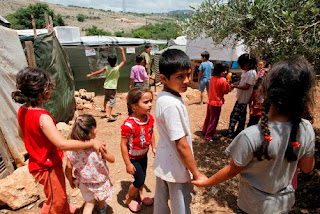Culturally responsive language teaching for resilience
The
past few years have seen several significant social, economic,
environmental and climatic changes in Sri Lanka that have eroded the
social contract between citizen and government in the country, which
have strengthened the case for the opposition movement, and
irreparably damaged the legitimacy of the current regime. Climate
Change has created tremendous social unrest in the past, and seen as
a driver of social unrest but this risk is glossing over the real
root causes. More recently, the massive mound of garbage in
Meethotamulla which collapsed in Sri Lanka, killing 19 people and
forcing more than 600 others to flee their homes has reinforced the
idea that if we are to address and resolve the drivers of unrest in
the country, these changes will have to be better explored and
exposed, in adapting strategic, innovative approaches and models.
When any social context overcome language barriers, disputes and
conflicts can be tackled, promoting positive and vibrant social
networks, peaceful coexistence and healthy dialogue.
It
is sad to note that, despite claims of being a middle-income country,
people in impoverished communities still seem to have been
systematically pushed out of their lands to build large dams, or
encourage multinational industrial units to be built. New forest laws
also forced villagers out of their traditional forest habitats, while
mining activities have also displaced people from their land and soil
erosion. The biggest obstacle to engage all three communities and
four major religions and keep communities together is to initiate a
dialogue with these disenfranchised sections of our population where
language needs and differences intersect with vulnerability, social
tensions and limited service provision. To be in the forefront of
dialogues, people must have the freedom of self-determination,
particularly in areas concerning forest use, mining, the location of
industry and the construction of landfills/ airports/highways/real
estate projects. Instead of being displaced they must have the major
say in what is being done in the name of development in their areas
where they can reap the benefits of development, instead of being
further driven into absolute poverty. Climate change is today one of
the main drivers of forced displacement, both through impact on
environment, not allowing people to live anymore in an area where
they were traditionally living, and a trigger of extreme poverty and
conflict.
When
people move into areas in search of food security because of arable
land to a new land which is already resourceful, with not enough
space to accommodate them, it’s a recipe for conflict. This is
because of the greater competition for land, jobs, access to
services, housing and natural resources. Naturally, this situation of
extreme poverty, coupled with a corrupt and inefficient developmental
process, make people easy targets for recruitment into extremist
movements and activities. Unfortunately, the main victims and
perpetrators of such violence, almost everywhere, are themselves
adolescents and young adults.
International
organizations, policy makers must recommend initiatives that provide
youth leaders and educators worldwide with the tools for
intercultural and interfaith exchanges, by which youth can develop a
stronger sense of ethics. They should be designed to help them
understand and respect people from other cultures and religions and
to nurture their sense of a global community. Instead of imposing
viewpoints held for generations on youth, which might limit their
freedom to engage with life as they find it, learn from it, and to
form their own values. To strengthen the capacity of youth to make
well-grounded ethical decisions based on values that promote respect
for other cultures and beliefs affirming human dignity as expressed
in the Universal Declaration of Human Rights. Most importantly, to
empower young people to engage in a dialogue to develop greater
sensitivity to differences and an understanding of others which will
allow them to appreciate and nurture their spirituality and to
develop and promote successful practices for living together with
people of different cultures, ethnicities, beliefs and religions.
Language
difficulties have often been highlighted as one of the barriers to
these marginalized and traumatized youths’ ability to come together
as a community to access education, public services or enter higher
education, training and employment. So, language can be utilized as
an essential component in enhancing the resilience of individuals and
communities. An Individual’s resilience can be understood as coping
with adversity by developing relationships with peers, while
community resilience can be strengthening the family’s income by
improving their livelihood by attaining higher education and access
to employment. Language learning builds resilience, giving a voice to
young people and adults; and providing individuals with the skills
they need to access work, services, education and information.
We
all perceive the world through our senses individually where each of
us notice different parts of it and this is even reflected in our
language which is not different to young people. They discover that
the change should be within themselves is the best path to reduce the
gap between differences through the development of languages.
Therefore, teaching of language as a means of self-expression and
communication should be much more exciting and compelling.
Language-learning activities as a basis for developing individual
resilience, ensuring dignity, self-sufficiency and life skills should
be paramount in classroom teaching. Culture should be central to
student learning because it empowers them intellectually, socially,
emotionally, and politically. So, it is safe to say that culturally
responsive language teaching recognizes, respects, and uses an
individual’s identities and backgrounds as meaningful sources by
using cultural referents to impart knowledge, skills and attitudes.
They do this by giving vulnerable people the language tools they need
to help withstand and recover from the effects of conflict and
displacement. Finally, language learning provides a bridge between
communities to improve lives avoiding misunderstandings and tensions.


Comments
Post a Comment